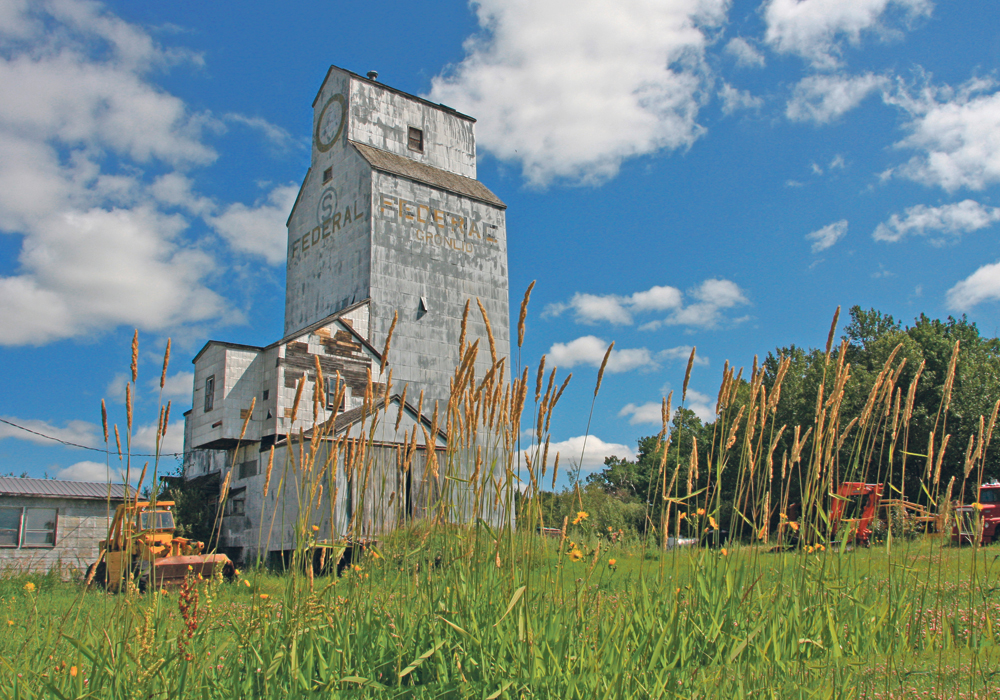A thriving community hall keep Gronlid hopping, and the promise of a diamond mine is making things interesting
GRONLID, Sask. — At the end of the abandoned Canadian Pacific Railway line north of Melfort, Sask., sits Gronlid. The village was established in 1925 with the building of a store, lunch counter and barber shop.
The community is named after Pastor H. O. Gronlid, who established the Beaver Creek Lutheran congregation in the district in 1912. The railway came through in 1927 and the station was also Gronlid’s first post office.
With the coming of the railway, the Searle elevator company, which had been established in Melfort in 1921 by Augustus Searle as part of the Home Grain Company, built the Searle and McCabe elevators.
Read Also

No special crop fireworks expected
farmers should not expect fireworks in the special crops market due to ample supplies.
In 1928, another store and the first blacksmith shop had been built along with a garage implement shop, a cafe, a pool room and a grain elevator. The cafe was later expanded to become a licensed premises, and the hotel and pool room were replaced in 1930 with a new building that included a barber shop. Another garage was built in 1929 but was later destroyed by fire.
By the 1930s, Gronlid was a bustling community with a shoemaker, a justice of the peace, Piniak’s General Store, a pool room, a John Deere implement shop, an open-air skating rink and a one-sheet curling rink.
The community hall located four miles southwest of Gronlid was moved into town and did double duty as the community’s first school. The first Co-op store was built in 1931 and eventually became an M & S Store.
In 1936, Ivor Palmer built a garage and later introduced the first electric lights to the community by installing a power plant in 1940.
In 1929, the first school classes were held in the community hall and in the residence of Reverend Gronlid, the pioneer missionary. In 1930, a two-room school was built. Later in 1935, another school building was constructed and in 1953 the two-room school was enlarged to include a chemistry lab and other facilities.
A new school was built in 1958 with four rooms added in 1961 to accommodate pupils from surrounding districts and later became part of the Melfort school division.
One of the unique buildings in the Gronlid area was a two-story log house. It is long gone but there is a fascinating history behind the structure.
According to Jerry Danyluk, whose grandparents acquired the quarter where the house once stood, Axenty Shapitka was born in 1886 in the western Ukraine and immigrated to Gronlid due to political unrest. Eventually, he found a homestead with good soil, plenty of large trees and a creek flowing through it. Axenty had to clear the brush off the land to establish a farmstead. Long hours were spent each day grubbing tree roots and building some log buildings to house the few animals he had and growing food for his family. He was able to purchase a good milking cow with money he earned from working on neighbouring more established farms.
Around 1936, Axenty built an elaborate two-story home out of hand-hewn timbers, which for that time was unique. The family continued their farming operations but moved off the property in 1942 due to economic uncertainty.

Danyluk said he doesn’t think anyone else lived in that home afterward.
“I remember being a pretty young kid when we started using the house for grain storage but I do not remember the year when my grandparents acquired the quarter.”
In recent times, there was a story circulating around Gronlid that the local grain elevator was the one pictured on the 1954 Canadian $1 bill. It made a great story but on further investigation from Scott Thomas at the Bank of Canada Museum in Ottawa, “the town featured on the $1 bill was Fleming, Sask., located on the Manitoba border. The town was famous for its iconic grain elevator, visible on the bill, and sadly burned down in 2010.”
Today Gronlid is still alive and well. There are several large farming operations in the area. Although the stores and businesses have long closed, there are lots of wedding events and receptions held in the Gronlid Hall.
Rio Tinto and Star Diamond Corp. have started to establish a diamond mine north of Gronlid at Fort à la Corne.
“We’ve got probably a number of years of work to go through before we are even at a decision point to think that this could be economic,” said Gary Hodgkinson, project director from Rio Tinto.
“Then there’s another process after that so this is a long-term game for sure.”
A decision on whether a long-discussed diamond mine will happen at Fort à la Corne, northwest of Gronlid, may be years away.















